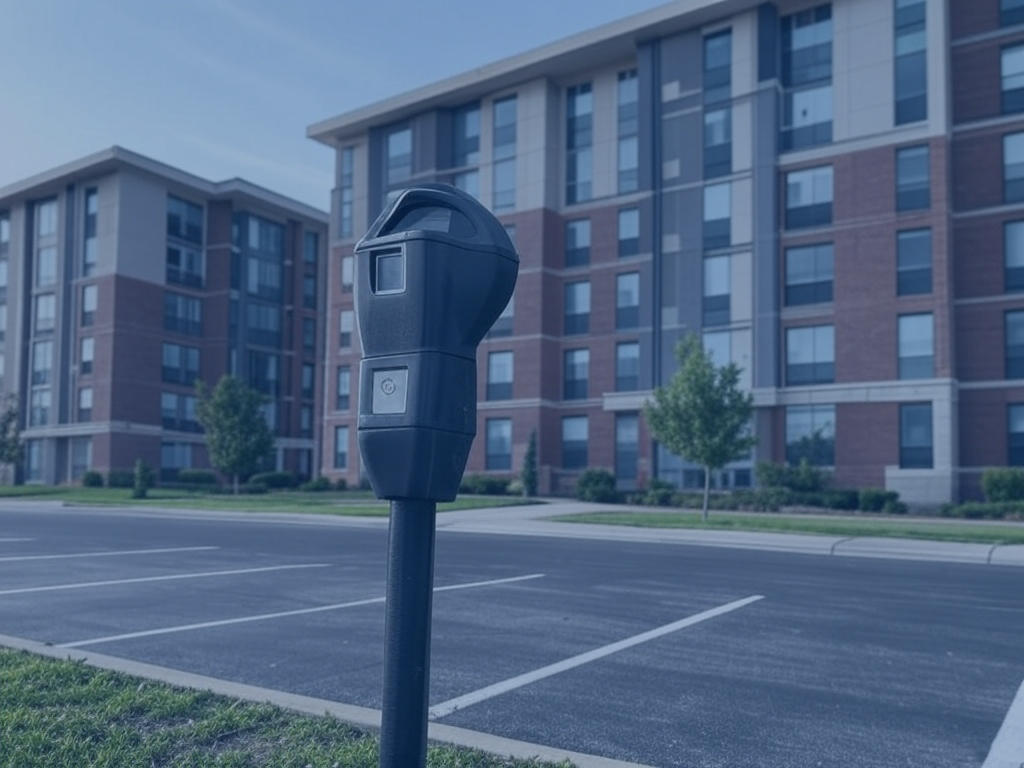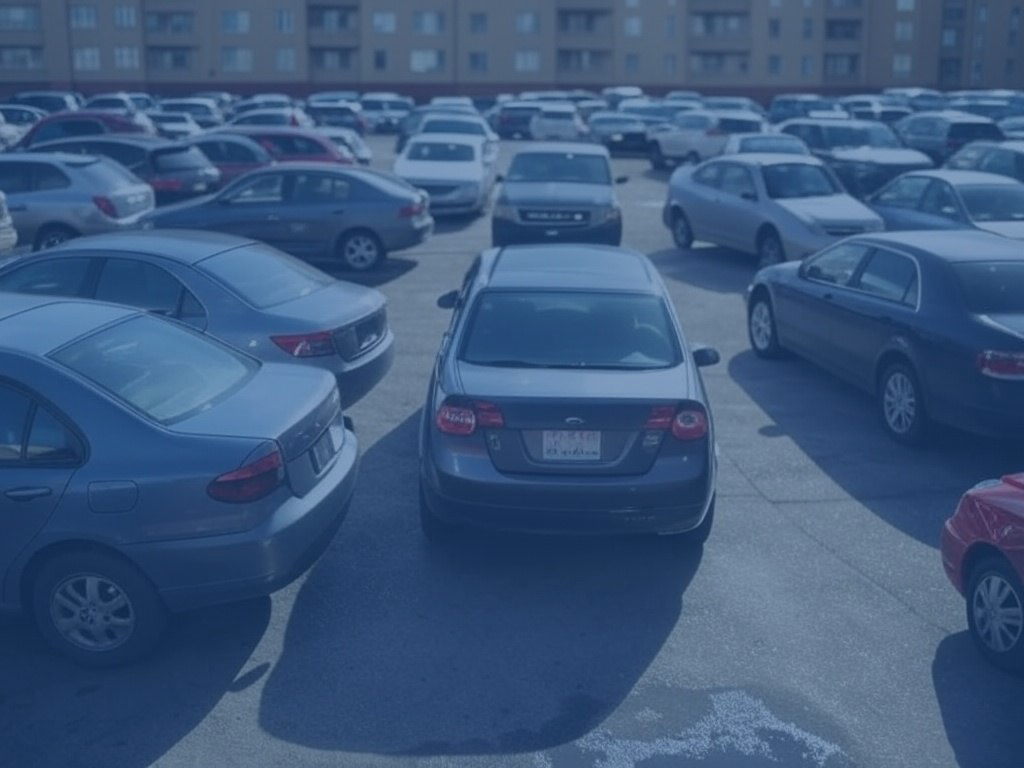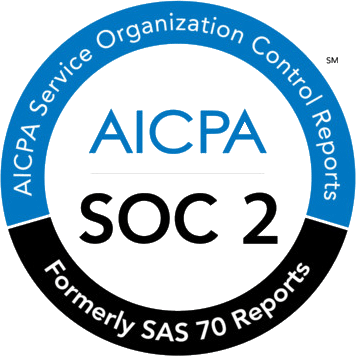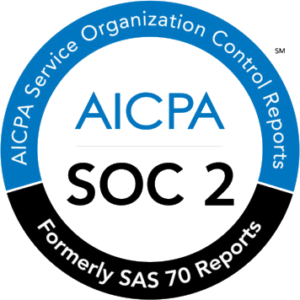Driving is the world’s most popular way to get to work. There are many advantages to driving to work. Freedom and convenience being front and centre. This causes a multitude of parking problems for companies.
“Parking facilities are the most expensive of all mobility facilities and can be hard to find.”
When looking at the car parking problems in your company there are two key questions.
- How do organisations ensure enough car parking for its employees without breaking the bank?
- How can your organisation develop a culture of sustainability-focused driving?
Looking for some real-life examples? Check out how companies like Colliers International, Version 1 & Ayre Chamberlain Gaunt have solved their parking problems.
Table of Contents
ToggleParking Management
A considerable sum of employees will always need a certain amount of parking spaces. This brings parking problems to the fore. Finding car parking solutions can be challenging for HR & Facilities staff. Ensuring there is just the right amount of space for everyone is a fine art, especially in urban areas.
When it comes to streamlining employee parking requirements you need to look at two key questions.
- How are you planning parking at the moment?
- How to optimise your parking spaces?
Watch our product video on how Wayleadr can eliminate parking management issues
Parking Space Optimisation:
The price of parking for staff often exceeds €4,000 a year. This makes staff parking coveted and a real source of internal tension. Many prospective employees won’t consider a job without adequate parking priviledges.
This is puts great pressure on Facilities & HR professionals. They are being left with the task of developing an “Employee Parking Policy” or “Staff Parking Policy”. The policy has traditionally manifested in one of two ways.
The Old Way
Parking Space Allocation:
The limited available spaces are assigned based on seniority or length of service. This often appeases senior & long-serving members of staff who are guaranteed a space.
However, it doesn’t take into consideration that staff spend time away from the office. The irony is that your senior staff are often out of the office the most.
Your leaders, closers, and influencers who are guaranteed parking can be externally focused. This results in an average of 30%-40% of your ‘limited spaces’ being empty at any given time.
First Come, First Serve:
The first come, first serve approach is the ultimate space race. If you arrive in time, you’ll get a space and if not, tough luck. While this approach may have certain benefits, it doesn’t work for the staff who need parking most.
For a young professional who lives close by, taking the car to work is more a luxury than necessity. Getting to work for 8 a.m. to guarantee a space is easy and accessible.
However, a parent of two children, living in the suburbs may not have such an effortless morning. After two school runs and traffic within the city centre, finding a space seems hardly likely.
“Proper management of spaces ensures employees who space most will receive it.”
Often companies operate a blended model of the above approaches. This is where key staff members are assigned spaces and it’s first come, first serve for the rest.
These models fail to grasp the complexities of parking demand. The length of commutes, distance from city center, personal lifestyle, and physical ability should all play a role in parking assignment. With limited company parking, all factors must be accounted for to maximise efficiency.
Progressive companies have introduced systems to try manage parking supply more effectively. While these systems are an improvement, they often entail complex Excel sheets or cluttered WhatsApp groups.
However, these processes soon become part of the problem. Poorly designed parking management systems become time intensive and expensive for companies to manage.

The Real Cost of Parking Problems To Your Company
It’s vitally important for companies to get parking right. Organisations need to be aware of the massive hidden costs to company parking. These costs are incurred across a broad section of business functions.
The Real Estate Cost:
There is nothing worse than paying for something and then only half using it. Parking spaces don’t come cheap. The average cost of a parking space in Dublin city centre according to the HWBC Market Outlook is up to €4,000.
If you follow the assigned spaces model. Let’s estimate that when people are out of the office one day a week. This means that you would be paying €800 a year per space due to inefficient parking management.
The Employee Cost:
Research from the University of Cambridge shows long commutes have negative impacts on employees.
“Longer commuting workers are 33% more likely to suffer from depression, 37% more likely to have financial worries, and 12% more likely to report work-related stress.”
Workers with long commutes are more likely to suffer from sleep deprivation and obesity issues.
Happy and productive employees are key to every company. Taking proactive steps to ensure that your staff can get to work is vital. Make sure that your company parking is benefitting as many staff members as possible.
A half-empty parking lot when others are paying off-site is bad for morale. When spaces lies empty commuters without assigned spots become resentful towards mismanagement.
Research by consultant, Jeff Parks, found “with a 30-45 minute commute, the probability of quitting jumped to more than 92 percent.”
On average, it costs 20% of an employee’s salary to replace them. This includes lag times, recruitment costs and staff interviewing time. Don’t allow poor parking practices to cause a resourcing burden for your company. Ensure staff receive the benefits they deserve.
The Administrative Cost:
Facilities & HR professionals are left in a catch 22 situation when it comes to parking. They either spend hours dealing with staff who are complaining about lack of parking. Or they go hands-on and spend hours administrating complex manual processes.
Either way, this is an unnecessary drain on your company’s operations. This is costing you and your company money and resources.
Revolutionize your parking management with software
Discover how Wayleadr can help you manage your parking more efficiently
Learn MoreThe Environmental Cost:
Sustainability is more than a buzzword. Businesses are gearing up to tackle one of the biggest issues of our time, the environment.
Pledges to reduce direct carbon emissions resolves are great. Companies have a responsibility to manage indirect emmissions caused by commuting.
Each staff member without employee parking is emitting around 1,500lbs of carbon driving each day. This is simply looking for somewhere to park. To offset this carbon footprint, companies would need to plant 20 trees a year per staff member.
The Solution: Parking Management Software?
The daunting prospect of optimising staff parking is now easier. Automation has unleashed endless possibilities which allow companies to:
- Ensure 100% parking occupancy at all times.
- Reduce administrative burden.
- Improve employee happiness by increasing volume & frequency of staff parking in company spaces.
- Reduce your companies carbon footprint.
- Save up to 50% on your companies annual parking bill.
Wayleadr is the leading provider of office parking management software globally and is trusted by major companies such as Factset, CEPSA and Colliers International.
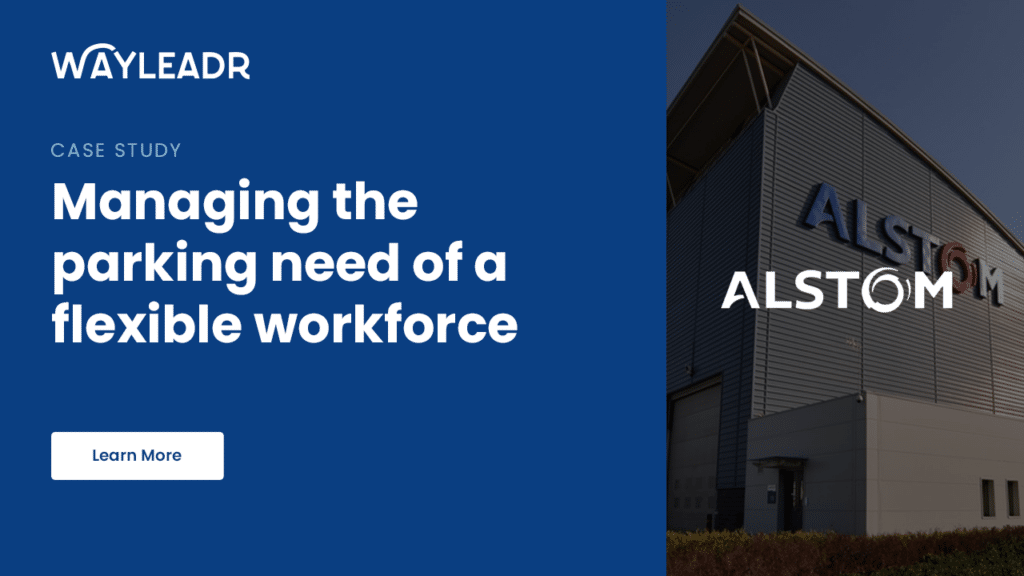
Parking Space Rental?
So you’ve optimised all your space to a tee and you still have massive parking problems. Your organisation needs to look into supplementing existing parking supply with extra space.
Car Parks:
Local car park operators are a step to expanding your organisation’s parking supply. They have lots of space and often do long-term contract rates with large discounts. Equally, many car parks are open to short-term arrangements. These focus on daily & weekly rates which tend to bring much smaller discounts.
Community Groups:
Local community groups can be a great source of supplementary space. They tend to be busiest in evenings and at weekends. So they are delighted to generate revenue from their spaces during the working day. Community centres, sports clubs, and churches are all examples of groups worth targeting.
Real Estate Companies:
Large property owners and management companies often have an plenty of parking spaces. They can be dotted across urban areas. Examples may include spare spaces within apartment blocks or undeveloped lots.
“The real challenge with sourcing additional space is actually getting to decision makers. If not managed correctly, finding supplemental parking becomes a wild-goose chase.”
Online marketplaces make finding available parking options a streamlined and relatively simple process. Marketplaces are used heavily by car parks, community groups, and real estate companies. They leverage the sites to advertise underused space and are a great place to start your search.
Parkpnp in Europe and SpotHero in the US are great examples of marketplaces. These marketplace operators have excellent links with space-owners.
If your organisation is unable to find the right space for your needs, reach out directly. Most marketplace operators have large stocks of unadvertised spaces. This could be the perfect way to find the spare space you need.
Sustainable Driving
Revolutionize your parking management with software
Discover how Wayleadr can help you manage your parking more efficiently
Learn MoreCarpooling:
There are lots of advantages associated with car sharing. The commuting costs are dramatically lowered. The stress associated with driving is shared among the carpool group.
Carpooling benefits the company as it reduces the pressures on your parking facilities. You reduce peak-time congestion around the office. It decreases single occupancy vehicles and increases the sense of community at work.
Carpooling is popular with employees who live far from the office, particularly if they don’t have access to public transport routes. In most workplaces, carpooling is ad-hoc and informal. Staff are left to identify synergies between themselves. This is effective in smaller organisations.
“Bigger organisations need higher-level coordination and encouragement. This allows carpooling to scale into an activity which becomes widespread practice.”
Addressing the key barriers to carpooling is crucial. Carpooling schemes tend to fail for one of five reasons.
Carpool Conundrum: Lack of Information
The most basic reason for carpooling schemes failing is a lack of information. Employees often live in a bubble. A few reminder emails will not always spark a carpooling community.
Gather the attention of wider employee base with internal launches and briefing sessions. Carpool outreach should occur every 3-6 months due to changes in personal circumstances.
Carpool Conundrum: Differing Work Schedules
Are employees willing to hang around for an extra hour to get or give a lift? It’s important to partner coworkers up according to their work schedules.
Think about the impact on company culture. In most companies, if a meeting is running late you will see certain people head for the exit because they have to collect the kids or go to sports training. It needs to become acceptable to leave meetings because of carpooling.
Carpool Conundrum: Who Pays What
People can be odd when it comes to money. Some staff members will happily pay petrol and tolls. Others will want to charge passengers not only for fuel but also for depreciation.
Recommend how much passengers should contribute. Use metrics such as cost per kilometre to give much-needed clarity.
Carpool Conundrum: Whose Driving
Some people always want to drive, some people never want to drive, and some people want to share the load. Make sure to pair people up with complementary carpooling partners.
Carpool Conundrum: Lack of Chemistry
Some people don’t get on, that’s life. Many people dread the prospect of a journey with someone who grinds their gears. The staff needs to have a clear and confidential way to offload unwanted passengers. Otherwise, their frustrations can manifest and lead to serious resentment.
“Formalising carpooling in your workplace can have a massive impact.”
There are a couple of approaches to establishing employee carpooling.
Carpool Solutions: Incentivise
why bother with carpooling? It can be more hassle than it’s worth, particularly for drivers who are going to be driving anyway. Guarantee staff parking or monthly fuel contributions. These are two popular benefits which are sure to go down well with employees.
Carpool Solutions: Facilitate
Even eager staff members looking to carpool can have trouble finding passengers. HR & Facilities must be the departments to join the dots. Have department representatives survey staff. Place sign up sheets in visible locations or literally go desk to desk.
Get the carpooling groups to sign a MOU, or memorandum of understanding. This outlines who is going to drive and when, estimated departure times, pick-up points and monetary reimbursements. This ensures everyone is reading off the same page and there is no misunderstandings.
Carpool Solutions: Celebrate
The most important step is to celebrate your carpoolers. Circulate emails to hero them across the company and call-out good behaviour at important meetings.
This make carpoolers feel good. It also reinforces the positioning of carpooling to other staff as something positive.
Car Sharing:
Car sharing is a new phenomenon which goes one step further than carpooling. When it comes to car-sharing staff don’t share car journeys, they actually share cars. This method is beneficial for companies whose staff use cars during the working day.
“Do staff drive to the office because they use their car during the working day? You should really think about introducing a car sharing scheme.”
Car-sharing schemes tend to take on two main forms:
Operator Schemes:
There are a growing number of car-sharing operators such as Zipcar in the US, GoCar in Ireland, Ubeeqo in Spain.
These operators work with local governments to increase urban mobility. They also partner with companies who need cars or small fleets located at their office. Traditionally, operators operate on a pay as you use model with minimum thresholds.
With operator schemes the operators take responsibility for the upkeep of the cars. This removes cost burden and administrative pressures from your company. These schemes can be particularly beneficial for larger companies.
Private Schemes:
The alternative to operator schemes is to leverage your staff’s existing network of cars. Though it may sound like a difficult feat, private schemes maximize employee mobility.
Private schemes are perfect for businesses with large amounts of car commuters. Employees are incentivised to make their cars available to colleagues during work hours.
Key incentives can include fuels cards, insurance contributions or even a car rental fee. This is where the company gives employees a set fee for every time their car has been used.
In organisations who spends lots of money each year on company cars, car-sharing is an effective way to reduce costs.
”Could your company transition to a more fluid shared fleet? A culture where your staff share cars both inside and outside of work hours? “
If you have a global, mobile workforce who spend a lot of time abroad, this is worth investigating further.
Electric Cars:
Electric cars are in vogue at the moment and rightly so. They are cheaper to run and better for the environment. In many countries they come with big tax incentives. Creating a culture of electric car usage in your workplace doesn’t have to be as daunting as some people make out.
Charging Points:
When it comes to electric cars, charging points are key. No electric car owner is going to run the gauntlet with when it comes to the battery life of their cars. No charging point at the office? Employees aren’t going to drive to work in their electric car.
Invest in the installation of electric charging points in your company car park. This is the first step in developing a culture of electric car usage.
Installation of charging points let staff know you are looking to cater for EVs. This alleviates a barrier for staff who are considering purchasing an electric vehicle.
Company Policy:
Many companies give their staff company cars to fulfill their duties. Even more, companies have subsidy schemes for staff buying new cars. Why doesn’t your company go electric with its next fleet of company cars?
Overnight Electric Vehicles will become a key part of your organisation’s future.
Another option is to offer preferential mileage and travel reimbursements for EVs. This will see people go electric much quicker.
Park & Ride:
Park & Ride allows drivers complete their journey by bus or rail. It is one of the most popular methods of transit among commuters who travel longer distances.
“If you are near a public transport hub this approach will reduce employees road time.”
Offer to pay for parking and subsidise transport costs. This will increase Park & Ride adoption.
Revolutionize your parking management with software
Discover how Wayleadr can help you manage your parking more efficiently
Learn MoreJourney Planning:
When staff know where they are going to park at the start of a journey, there are massive benefits. According to leading parking academic Donald Shoup, the average person spends 800m per journey looking for somewhere to park.
Picture your own employees, playing out this commuting scenario at your workplace? Every day, employees converge on your office with the hope they’ll find parking nearby. Some staff members might be lucky enough to grab a spot in the company car park.
However, for their remaining coworkers, it is much more complicated. The unfortunates arrive at the office to find the car park full. They then swing around to the local car park to find that it’s also full.
They then start to patrol local housing estates and find a space after 15 minutes. Every organisation has commuters who experience this scenario on a regular basis.
Imagine this average 800m journey at scale. Outside your office building, hundreds of cars replicating the same habit every morning. This is causing traffic chaos for your employees and the local area.
“Introduce strong parking allocation systems. Ensure your staff know ahead of departure whether they have a parking space at the office.”
Allow your staff to plan their destination, this will eliminate time spent on the road.
Employee Incentives:
So you have introduced all of the above and too many of your employees are still driving fuel powered cars to and from work? What else can you do?
Well, there is one further answer. Many companies around the world such as KPMG are actually paying people to leave their cars at home. Everyday, employees who takes alternative transport to work get a little bonus.
It makes a lot of sense for your organisation to invest in these employee incentives. Many companies spend thousands of euro a month renting parking spaces. Why not reduce the number of parking spaces and give staff who choose not to park a little bump?
Decrease your company’s dependency on cars with our guides growing running, walking, cycling and public transport at work.

